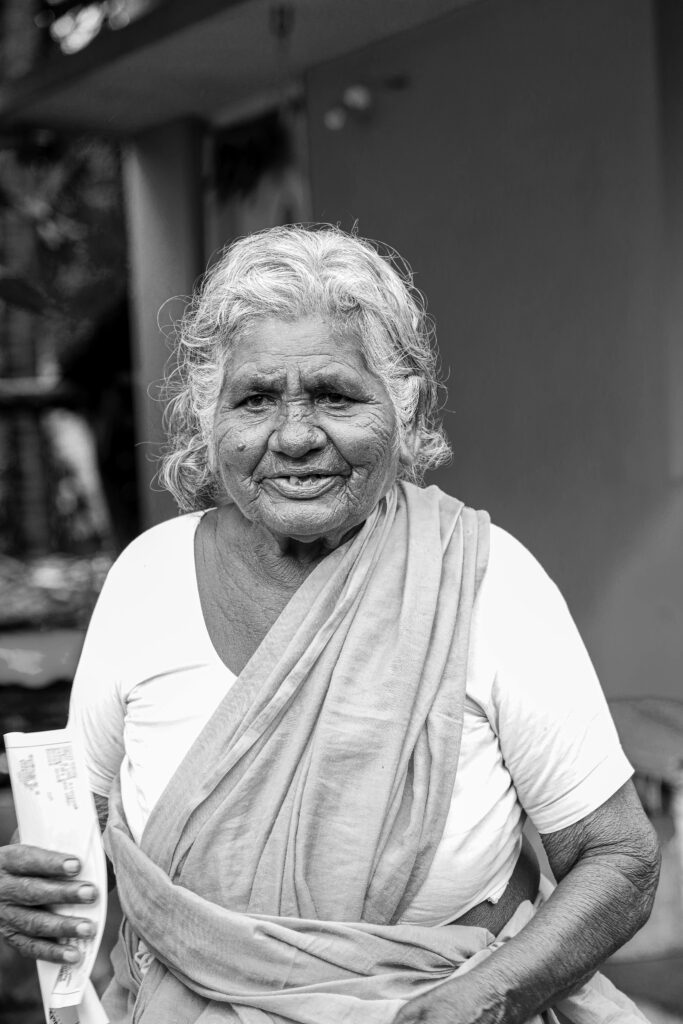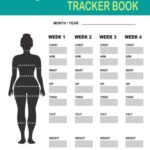Living with diabetes can be challenging, especially for women who face unique healthcare barriers. One particular obstacle that stands in their way is the cost and accessibility of diabetes medication and supplies. For many women, obtaining the necessary medication to manage their diabetes becomes a burdensome task due to the financial strain it places on them. These women often find themselves caught in a difficult dilemma, where they must prioritize their health while also struggling to make ends meet. In this article, we will explore the impact of the cost of diabetes medication on women and how it serves as a significant barrier in their journey towards managing their health effectively.
In This Article
ToggleThe Prevalence of Diabetes in Women
Statistics on the number of women affected by diabetes
Diabetes is a condition that affects millions of people around the world, and women are no exception. In fact, the prevalence of diabetes in women has been steadily increasing over the years. According to recent statistics, an estimated 215 million women worldwide are living with diabetes. This accounts for approximately 9.3% of the global female population. Furthermore, it is projected that by 2040, the number of women with diabetes will rise to 313 million. These statistics highlight the urgent need to address the issue of diabetes in women and ensure that adequate support and resources are available to manage this condition effectively.
Different types of diabetes that affect women
There are several different types of diabetes, but the most common ones that affect women are type 1 and type 2 diabetes. Type 1 diabetes is an autoimmune condition that typically develops in childhood or adolescence. It occurs when the body’s immune system mistakenly attacks and destroys the insulin-producing cells in the pancreas. On the other hand, type 2 diabetes is more common and usually develops later in life. It is characterized by insulin resistance, where the body’s cells become less responsive to insulin or fail to utilize it effectively. Additionally, gestational diabetes is another type of diabetes that affects pregnant women. This condition usually resolves after childbirth but can increase the risk of developing type 2 diabetes later in life.
Impact of diabetes on women’s health
Diabetes can have a significant impact on women’s health. It can increase the risk of various complications, including cardiovascular disease, kidney disease, eye problems, and nerve damage. Moreover, women with diabetes are more prone to certain conditions such as polycystic ovary syndrome (PCOS) and urinary tract infections. Additionally, diabetes can affect women’s reproductive health and increase the risk of pregnancy complications, including gestational diabetes, preeclampsia, and premature birth. The management of diabetes is crucial to minimize the occurrence of these complications and ensure the overall well-being of women.
The Importance of Diabetes Medication
Explanation of the role of medication in managing diabetes
Medication plays a vital role in managing diabetes. For individuals with type 1 diabetes, insulin is essential as it helps regulate blood sugar levels. Insulin can be administered through injections or insulin pumps. On the other hand, individuals with type 2 diabetes may require different types of medication, such as oral antidiabetic drugs or injectable medications, to control blood sugar levels. These medications work by either stimulating insulin production, enhancing insulin sensitivity, or inhibiting the release of glucose from the liver. By effectively managing blood sugar levels, medication helps prevent or reduce the risk of complications associated with diabetes and improves overall health outcomes.
Types of medication commonly prescribed for diabetes
There are several types of medications commonly prescribed for diabetes. For individuals with type 1 diabetes, synthetic insulin is the primary medication. It is available in various forms, including rapid-acting, short-acting, intermediate-acting, and long-acting insulin. Each type has a different onset and duration of action, allowing for precise control of blood sugar levels throughout the day. For individuals with type 2 diabetes, the most commonly prescribed medications include metformin, sulfonylureas, meglitinides, thiazolidinediones, and dipeptidyl peptidase-4 (DPP-4) inhibitors. These medications work in different ways to regulate blood sugar levels and are often prescribed in combination to achieve optimal results.
Access to medication for women with diabetes
While medication is crucial for managing diabetes, access to it can be a significant challenge for many women. The high cost of medication, limited healthcare coverage, and inadequate insurance plans can all contribute to barriers in accessing the necessary medication. In some cases, women may struggle to afford the prescribed medication, leading to medication non-adherence and suboptimal management of their diabetes. It is important to address these barriers and ensure that all women have equal access to affordable and essential diabetes medications.

This image is property of images.pexels.com.
The Financial Burden of Diabetes Medication
High costs associated with diabetes medication
The cost of diabetes medication can be a significant financial burden for women. Compared to other chronic conditions, the cost of managing diabetes is considerably higher due to the ongoing need for medication, supplies, and regular monitoring. The annual cost of diabetes medication alone can range from hundreds to thousands of dollars, depending on the type of medication and dosage required. Additionally, individuals with diabetes often need to purchase blood glucose monitoring devices and test strips, insulin syringes or pens, and other supplies to effectively manage their condition. When these costs add up over time, it can become increasingly challenging for women to afford their necessary diabetes medication.
Comparison of medication prices for women and men
When comparing the cost of medication for women and men with diabetes, there is often a disparity. Research has shown that women tend to pay more for certain medications compared to men. This can be attributed to various factors, including gender-based pricing practices by pharmaceutical companies and the specific healthcare needs of women. For example, medications used to manage conditions related to women’s health, such as PCOS or gestational diabetes, may be more expensive or have limited generic alternatives. These discrepancies in medication prices further exacerbate the financial burden faced by women with diabetes.
Impact of medication costs on women’s financial stability
The high costs of diabetes medication can have a considerable impact on women’s financial stability. Many women may struggle to afford the necessary medication, forcing them to make difficult choices between their healthcare needs and other essential expenses. Some may cut back on the dosage or skip doses altogether in an attempt to stretch their medication supply, leading to inadequate management of their diabetes and an increased risk of complications. Moreover, the financial strain can cause stress and anxiety, which can negatively impact overall well-being. It is crucial to address the financial barriers associated with diabetes medication to ensure that women can access and afford the medication they need to maintain their health.
Insurance Coverage and Diabetes Medication
Overview of insurance coverage for diabetes medication
Having adequate insurance coverage is essential for women with diabetes to access the necessary medication. In many countries, including the United States, health insurance plans cover a portion of the cost of diabetes medication. This coverage can vary depending on the type of plan and the specific medications prescribed. Some insurance plans may cover a wide range of diabetes medications, while others may have restrictions or require prior authorization. It is important for women to carefully review their insurance plans and understand the coverage details to ensure they can access their needed medication at an affordable cost.
Challenges faced by women in obtaining adequate coverage
Despite the presence of insurance coverage, women with diabetes often face challenges in obtaining adequate coverage for their medication. Some insurance plans may have high deductibles or copayments, making it difficult for women to afford the out-of-pocket expenses associated with their medication. Additionally, certain medications may not be included in the insurance plan’s formulary, requiring women to seek prior authorization or pay for the medication at a higher cost. In some cases, insurance coverage for diabetes medication may be limited to specific pharmacies or mail-order services, which can present accessibility issues for women in rural or underserved areas. These challenges can create significant barriers to obtaining the medication needed for effective diabetes management.
Disparities in insurance coverage for women with diabetes
There are also disparities in insurance coverage for women with diabetes, particularly among marginalized populations. Women from low-income households or minority backgrounds may face greater challenges in obtaining comprehensive insurance coverage that adequately addresses their diabetes medication needs. Lack of access to affordable insurance plans or limited availability of Medicaid or other government assistance programs can contribute to these disparities. It is important to address these inequities and ensure that all women, regardless of their socioeconomic status or racial/ethnic background, have equitable access to insurance coverage that includes the necessary diabetes medications.

This image is property of images.pexels.com.
Racial and Ethnic Disparities in Medication Access
Examining the impact of race and ethnicity on medication access
Race and ethnicity can play a significant role in medication access for women with diabetes. Studies have shown that racial and ethnic minorities, such as African Americans, Hispanics, and Native Americans, are more likely to face barriers in accessing affordable medication. This can be attributed to various factors, including lower income levels, higher rates of uninsured or underinsured individuals, and limited availability of healthcare services in underserved communities. These disparities in medication access contribute to poorer health outcomes among minority women with diabetes and further exacerbate existing health inequalities.
Barriers faced by minority women in accessing affordable medication
Minority women with diabetes face several barriers in accessing affordable medication. As mentioned earlier, these women are more likely to be uninsured or have limited insurance coverage that may not adequately address their medication needs. Additionally, medication costs may be higher for certain minority populations due to systemic pricing disparities or limited availability of generic alternatives. Language barriers, cultural differences, and lack of healthcare providers who understand the specific needs of minority women can further hinder access to affordable medication. To overcome these barriers, it is crucial to implement targeted strategies that address the unique medication access challenges faced by minority women with diabetes.
Addressing the disparities through improved healthcare policies
Addressing the racial and ethnic disparities in medication access requires a multifaceted approach that involves improved healthcare policies and targeted interventions. Implementing policies that expand access to affordable insurance coverage, particularly for marginalized populations, is essential. This can include expanding eligibility for Medicaid, providing subsidies for health insurance premiums, and ensuring that insurance plans cover a broad range of diabetes medications without excessive cost-sharing requirements. Additionally, efforts should be made to increase the presence of healthcare providers from diverse backgrounds in underserved communities, along with culturally sensitive education and outreach programs. By addressing the systemic factors contributing to disparities in medication access, we can work towards creating a more equitable healthcare system for women with diabetes.
The Intersection of Gender and Socioeconomic Factors
Exploring how socioeconomic factors influence medication affordability
The affordability of diabetes medication is influenced by various socioeconomic factors that intersect with gender. Women, in general, tend to have lower incomes than men, which can make it challenging to afford expensive medications. Furthermore, women are more likely to work in part-time or low-wage jobs that may not provide comprehensive health insurance coverage. The gender pay gap and lack of equal opportunities for career advancement can further contribute to financial constraints for women with diabetes. Additionally, women who are primary caregivers for children or elderly family members may face increased financial responsibilities, making it even more difficult to afford medication.
Effect of gender inequalities on women’s ability to afford medication
Gender inequalities play a significant role in women’s ability to afford diabetes medication. Women, on average, earn less than men for similar work, which can limit their purchasing power and ability to afford expensive medications. The lack of affordable childcare options or paid family leave policies can also add financial strain, making it challenging for women to allocate sufficient resources towards their medication needs. Additionally, the persistent gender-based discrimination in the workplace can limit women’s access to comprehensive health insurance coverage that includes diabetes medication. These gender inequalities need to be addressed to ensure that women have equal opportunities to afford and access the medication they need for effective diabetes management.
Identifying strategies to mitigate the cost barrier
Mitigating the cost barrier associated with diabetes medication requires the implementation of targeted strategies that consider the intersection of gender and socioeconomic factors. Advocacy for equal pay and improved work opportunities for women is crucial to address income disparities and increase women’s purchasing power. Expanding access to affordable health insurance through policies such as the Affordable Care Act or universal healthcare can provide women with comprehensive coverage that includes diabetes medication. Additionally, implementing programs that provide financial assistance or subsidies for low-income individuals with diabetes, regardless of gender, can help alleviate the financial burden. By recognizing the unique challenges faced by women with diabetes and implementing gender-responsive policies, we can work towards mitigating the cost barrier and improving medication affordability.

This image is property of images.pexels.com.
Alternative Treatment Options for Cost Reduction
Exploring non-medication approaches to managing diabetes
While medication is a crucial component of diabetes management, there are also non-medication approaches that can help reduce costs. Lifestyle modifications, such as adopting a healthy diet, engaging in regular physical activity, and maintaining a healthy weight, can have a significant impact on blood sugar control and overall health. Making healthier choices and incorporating these lifestyle changes into daily routines can help reduce the reliance on medication and potentially lower healthcare costs. However, it is important to note that these interventions should be complemented by regular monitoring and consultation with healthcare professionals to ensure optimal diabetes management.
Lifestyle changes and their impact on medication requirements
Engaging in lifestyle changes can have a positive impact on medication requirements for women with diabetes. By adopting a healthy diet that is low in processed foods, sugar, and unhealthy fats, women can help regulate their blood sugar levels and decrease the need for high doses of medication. Regular physical activity, such as brisk walking or aerobic exercises, can also improve insulin sensitivity and promote weight loss, reducing the overall medication requirements. Weight management is particularly important for women with type 2 diabetes, as losing excess weight can improve blood sugar control and potentially lead to a decreased need for medication. Lifestyle changes offer an effective and cost-efficient approach to diabetes management which may significantly alleviate the financial burden associated with medication costs.
Supporting women in implementing alternative treatments
To effectively implement alternative treatment options for cost reduction, it is essential to support women in making sustainable lifestyle changes. Providing education and resources on healthy eating habits, physical activity, and weight management can empower women to take control of their diabetes and reduce their reliance on costly medications. Healthcare providers play a vital role in educating patients about alternative treatments and helping them set realistic goals for lifestyle changes. Additionally, community support groups, online forums, and peer networks can provide women with the necessary encouragement and motivation to make and sustain these lifestyle changes. By ensuring access to supportive resources and creating a conducive environment for change, we can help women successfully implement alternative treatments and reduce the financial burden associated with medication costs.
The Importance of Advocacy and Education
Empowering women with knowledge about medication assistance programs
Advocacy and education are essential to empower women with diabetes and ensure they are aware of the various medication assistance programs available to them. Many pharmaceutical companies offer patient assistance programs that provide eligible individuals with free or reduced-cost medication. These programs are designed to assist individuals who may not have adequate insurance coverage or face financial hardships. Additionally, government programs such as Medicaid and Medicare offer assistance to low-income individuals and older adults, respectively, to access necessary medication at affordable costs. By educating women about these programs and providing guidance on the application process, we can help them navigate the complex healthcare system and access the assistance they need to afford their diabetes medication.
Role of healthcare providers in educating patients about affordable options
Healthcare providers play a critical role in educating patients about affordable options for diabetes medication. They can provide information about generic alternatives, discount programs, and patient assistance programs offered by pharmaceutical companies. Healthcare providers should guide women through the process of selecting the most cost-effective medication for their specific needs, taking into account factors such as efficacy, side effects, and cost. Additionally, healthcare providers can help women understand the importance of medication adherence and the potential consequences of skipping or reducing medication doses due to affordability concerns. By providing comprehensive education and advocating for affordable medication options, healthcare providers can empower women to actively participate in managing their diabetes and address the financial barriers they may face.
Promoting awareness of the cost barrier for women with diabetes
Promoting awareness of the cost barrier for women with diabetes is crucial to drive change and improve medication affordability. Raising public awareness about the financial challenges faced by women with diabetes can help break the stigma associated with medication non-adherence and foster empathy and understanding. The media, healthcare organizations, and advocacy groups can play a significant role in highlighting the stories and experiences of women who struggle to afford their necessary diabetes medication. Additionally, engaging policymakers and stakeholders in discussions about affordability can help generate support for policy changes and reforms that address the cost barrier. By promoting awareness and creating a sense of urgency, we can work towards creating a healthcare system that ensures equitable access to affordable medication for all women with diabetes.

Government Policies and Pharmaceutical Industry
Examining the role of government policies in medication affordability
Government policies play a crucial role in determining medication affordability for women with diabetes. Policies related to healthcare coverage, pricing regulations, and generic drug availability can significantly impact the cost of diabetes medication. For instance, policies that promote competition among pharmaceutical companies can drive down prices and increase accessibility to more affordable generic alternatives. Similarly, policies that expand insurance coverage and reduce out-of-pocket expenses can help alleviate the financial burden on women. Additionally, government initiatives that prioritize preventive care, early detection, and chronic disease management can help reduce the need for expensive medications in the long run. By implementing comprehensive healthcare policies that prioritize medication affordability, we can create a more equitable healthcare system for women with diabetes.
Influence of the pharmaceutical industry on pricing
The pharmaceutical industry plays a significant role in medication pricing, which can directly impact medication affordability for women with diabetes. Companies set the prices for their medications based on various factors, including research and development costs, manufacturing expenses, and market demand. However, critics argue that the current pricing practices of the pharmaceutical industry are often unjustifiably high and contribute to the financial burden faced by women with diabetes. Some companies engage in practices such as “evergreening” or patent extensions, which prolong their exclusive rights to a medication and limit the availability of generic alternatives. Additionally, high marketing and advertising costs can drive up the prices of medications. Addressing these pricing practices and promoting greater transparency and accountability within the pharmaceutical industry is essential to ensure accessible and affordable medication for all women with diabetes.
Advocating for policy changes to reduce medication costs
Advocating for policy changes is crucial to reduce medication costs and improve affordability for women with diabetes. Women’s rights organizations, patient advocacy groups, healthcare providers, and policymakers must come together to prioritize the needs of women with diabetes and advocate for meaningful changes. Policy initiatives can include measures such as increasing government funding for research on affordable medication alternatives, implementing price regulations to prevent excessive pricing, and promoting transparency in the pharmaceutical industry’s pricing practices. Additionally, advocating for comprehensive healthcare reforms, including universal healthcare or expanded Medicaid coverage, can help ensure that all women have access to affordable diabetes medication. By advocating for policy changes, we can work towards breaking down the financial barriers that prevent women from accessing the medication they need to effectively manage their diabetes.
Conclusion: Breaking Down the Barrier
Acknowledging the cost barrier as a significant issue for women with diabetes
The cost barrier associated with diabetes medication is a significant issue that affects women with diabetes worldwide. The high costs, disparities in medication pricing, and limited insurance coverage create financial burdens that hinder women’s ability to access and afford the necessary medication. Acknowledging this cost barrier is the first step towards addressing the issue and working towards solutions that promote medication affordability for all women with diabetes.
Highlighting the need for collective efforts to address the problem
Addressing the cost barrier requires collective efforts from various stakeholders, including policymakers, healthcare providers, pharmaceutical companies, and advocacy groups. Collaboration and cooperation are essential to formulate and implement policies that prioritize medication affordability, promote transparency, and increase the availability of affordable generic alternatives. Through shared responsibility and collective action, we can break down the barriers that prevent women from accessing the diabetes medication they need.
Providing recommendations for improving medication affordability
To improve medication affordability for women with diabetes, several recommendations can be made. First, policymakers should prioritize healthcare reforms that expand insurance coverage, reduce out-of-pocket expenses, and promote preventive care to lower the overall need for expensive medications. Second, the pharmaceutical industry should adopt fair pricing practices and increase transparency to ensure that medications are priced reasonably and without excessive profit margins. Third, healthcare providers play a critical role in educating patients about medication assistance programs, generic alternatives, and lifestyle changes that can reduce medication requirements. Finally, advocacy and education efforts must be strengthened to raise awareness about the cost barrier and advocate for policy changes that prioritize medication affordability for women with diabetes.
By implementing these recommendations and working together, we can break down the financial barrier associated with diabetes medication and ensure that all women have access to affordable treatments that enable them to effectively manage their diabetes and improve their overall health.
Related posts:
 Long-Term Health Concerns for Women with Diabetes
Long-Term Health Concerns for Women with Diabetes
 Balancing Diabetes Management and Enjoyment through a Healthy Diet
Balancing Diabetes Management and Enjoyment through a Healthy Diet
 Coping with the Emotional Challenges of Living with Diabetes
Coping with the Emotional Challenges of Living with Diabetes
 Understanding the Impact of Diabetes on Pregnancy: Mother and Child Concerns
Understanding the Impact of Diabetes on Pregnancy: Mother and Child Concerns
 Body Measurement Journal for Women: A Comprehensive Tracker for Weight Loss and Fitness Goals – 110 Pages, 8.5″ X 11″ InchEmptyEntries, Weight Loss Progress Diary, Exercise Log, and Meal Planner – Perfect for Girls and Women
Body Measurement Journal for Women: A Comprehensive Tracker for Weight Loss and Fitness Goals – 110 Pages, 8.5″ X 11″ InchEmptyEntries, Weight Loss Progress Diary, Exercise Log, and Meal Planner – Perfect for Girls and Women
 Viynran 10 Inch Ceramic Portion Control Plates for Weight Management and Diabetes Control – Set of 2, Reusable and Microwave Safe
Viynran 10 Inch Ceramic Portion Control Plates for Weight Management and Diabetes Control – Set of 2, Reusable and Microwave Safe











No comment yet, add your voice below!